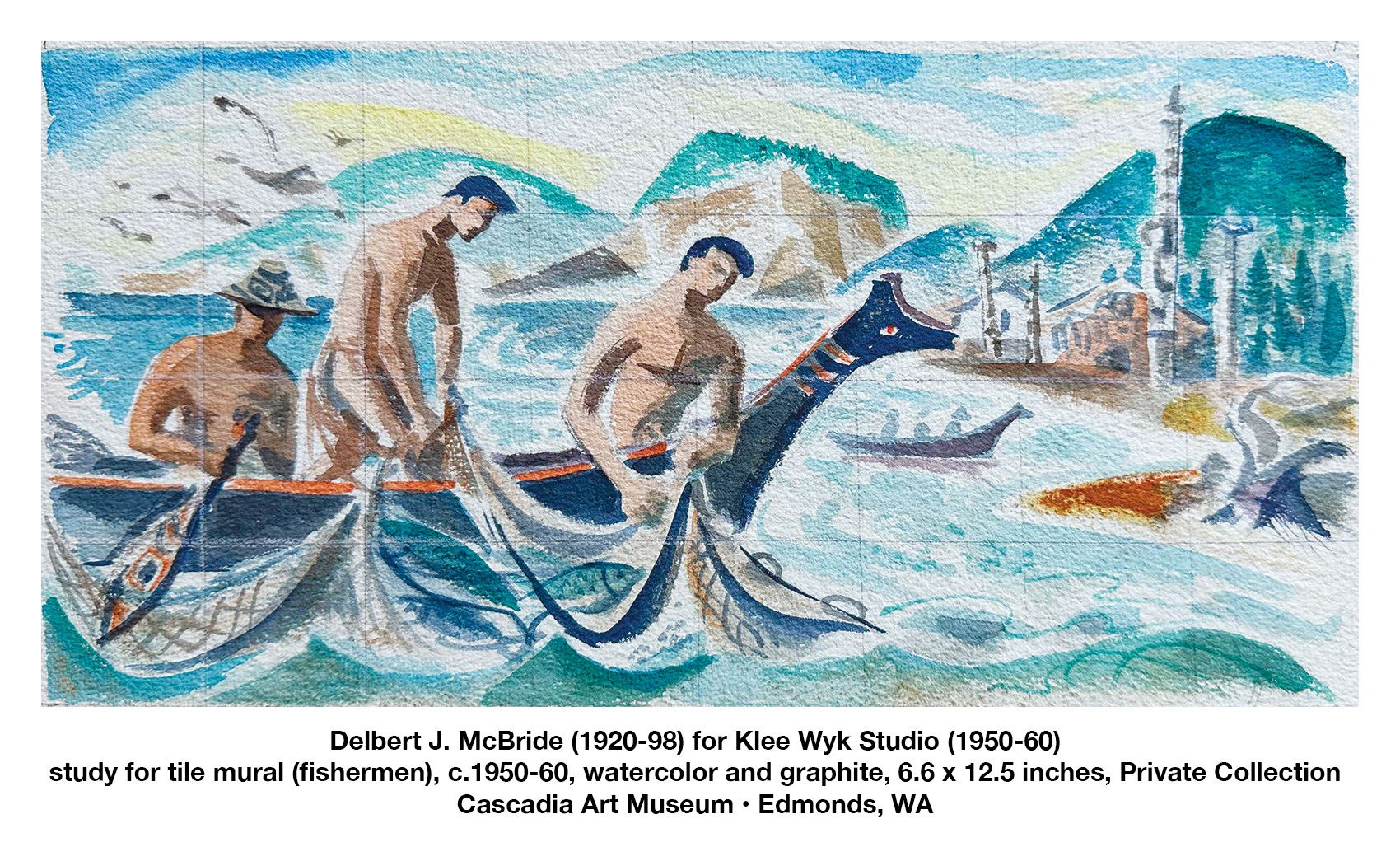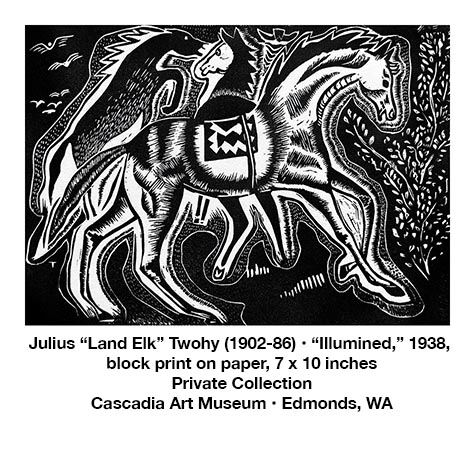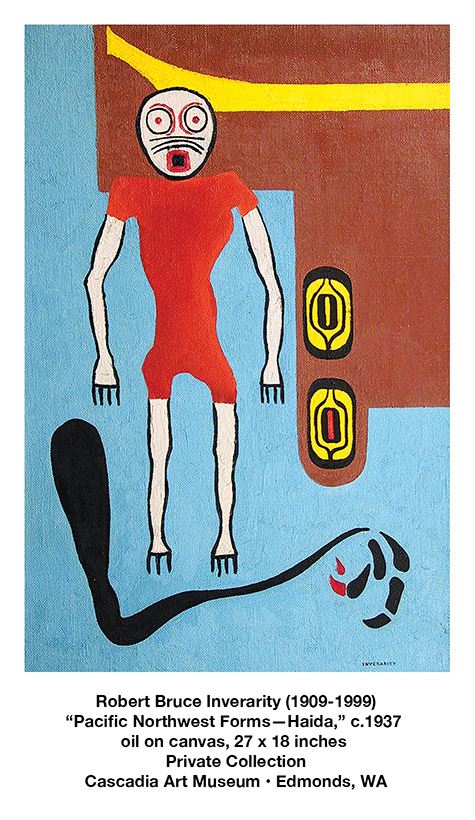

For decades David Martin has been researching Northwest modern art, curating exhibit, and publishing various books. His focus is on mid-20th century Northwest photography and printmaking by artists marginalized because of gender, race, and sexual preference.
But now, as director of the Cascadia Art Museum, Martin has a platform for showing some of the results of that research. The current exhibit “Native American Modern, Shared Expressions in Northwest Art” gives a subtle and fascinating view of intersections and shared ideas between Native and non-Native artists working mainly in the 1930s and 1940s. During this time, the government art projects were acknowledging Native artists and supporting them, an abrupt turnaround from decades of suppression and efforts to “civilize” Native Americans with brutal boarding schools and cultural bans.

One of the leaders in this re-evaluation of Native cultures was Erna Gunther. Gunther studied with Franz Boas, and went on to lead the Anthropology department at the University of Washington. She also became the first director, in 1930, of the Washington State Museum, now the Burke. In the third room of the exhibition are some video clips from a television series she created in 1965-1966. It was called “Western Washington Indians Then and Now.” In it, she explains Native dancing, music, singing, clothing, all with great respect and knowledge. Professor Gunther was a major catalyst for many of the artists in the exhibition both Native and non-Native.
The star artist is Julius “Land Elk” Twohy (1902-1986). The first room of this three-part exhibition is devoted to his work. Julius Twohy created a 72-foot mural “The Flight of the Thunderbird,” as a WPA commission in the Cushman Hospital (Tacoma Indian Hospital). The exhibition includes photographs that document the artist painting the mural, a study, and a detailed explanation. Unfortunately the mural was first painted over and then destroyed when the building was torn down in 2003. Much of Twohy’s work was lost as a result of arson in his studio, but the exhibition brings together a group of WPA lithographs from the Henry Art Gallery and private collections, as well as a few paintings and studies.

We see the exhibit thesis clearly in Twohy’s art. In works such as “Tom Toms and Drum,” his prints combine abstract forms and modernist fragmentation with Native subjects, the drums convey sound, rhythm, and movement.Each lithograph has a different interpretation of abstract form.
In the second room is the Klee Wyk Studio (1951-1961), comprised of Delbert McBride, his brother Albert with his life partner Richard Schneider, as well as painter Oliver Tiedemann. A type of Bloomsbury approach, they created decorative items such as tiles and bowls based on their study of Northwest Coast art and culture. Martin distinguishes their work as inspired by Native motifs, rather than appropriating them, as here again one sees the intermixing of modernism with, for example, Haida designs.
Also in the second room are carpets by Bruce Inverarity (artist/leader of the WPA in Washington State), with abstracted motifs inspired by Native designs. Inverarity is also represented by a few eccentric paintings.
The third room features a selection from Worth Griffin’s series of sixty portraits of Native leaders. Griffin paints in the traditional realist, academic style, but respectfully includes detailed observations and emotional insight into these proud people at a time when they were under enormous stress.
Also in this room is African American/ Indigenous artist Milt Simons who creates abstracted Native related imagery in an expressionist style.
,%20Untitled,%201952.%20Gouache%20on%20paper.%20Private%20Collection.jpg) David Martin’s theme is that these artists knew one another through Erna Gunther and the government-funded art programs. As Indigenous artists absorbed modernism and White artists explored Native design, the exchange was respectful and complex. We can hope that the show leads to more research on this fascinating era, when the Northwest art world was small and artists of diverse backgrounds came together.
David Martin’s theme is that these artists knew one another through Erna Gunther and the government-funded art programs. As Indigenous artists absorbed modernism and White artists explored Native design, the exchange was respectful and complex. We can hope that the show leads to more research on this fascinating era, when the Northwest art world was small and artists of diverse backgrounds came together.
Susan Noyes Platt
Susan Noyes Platt writes a blog www.artandpoliticsnow.com and for local, national, and international publications.
“American Modern, Shared Expressions in Northwest Art,” is on view Wednesday through Sunday, from 11 a.m. to 5 p.m. through October 29 at Cascadia Art Museum, located at 190 Sunset Avenue in Edmonds, Washington. Visit www.cascadiaartmuseum.org for information.